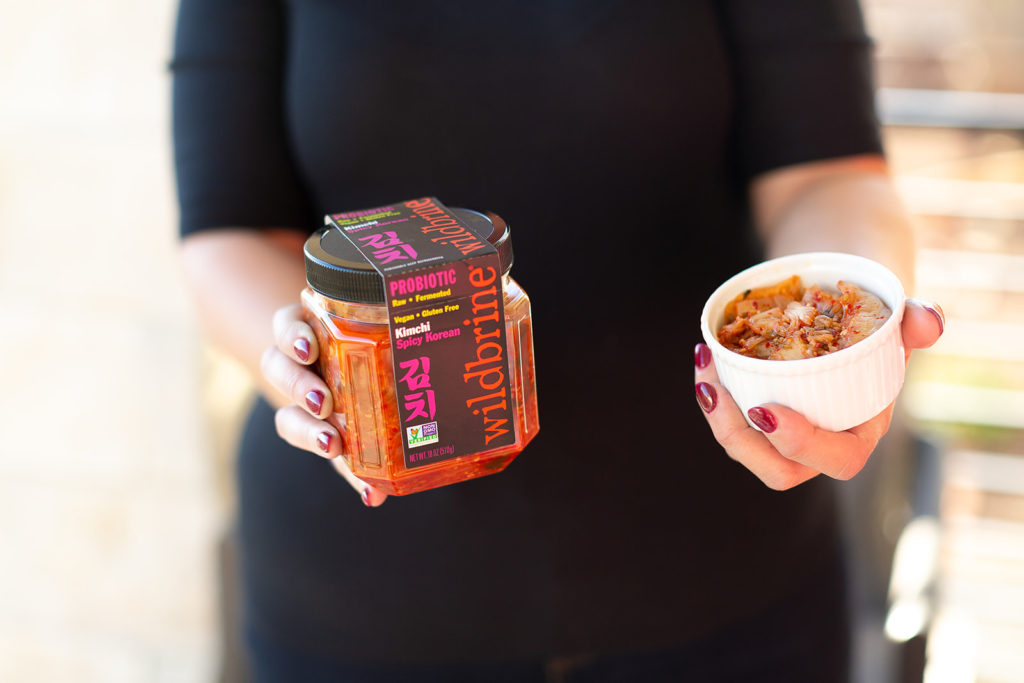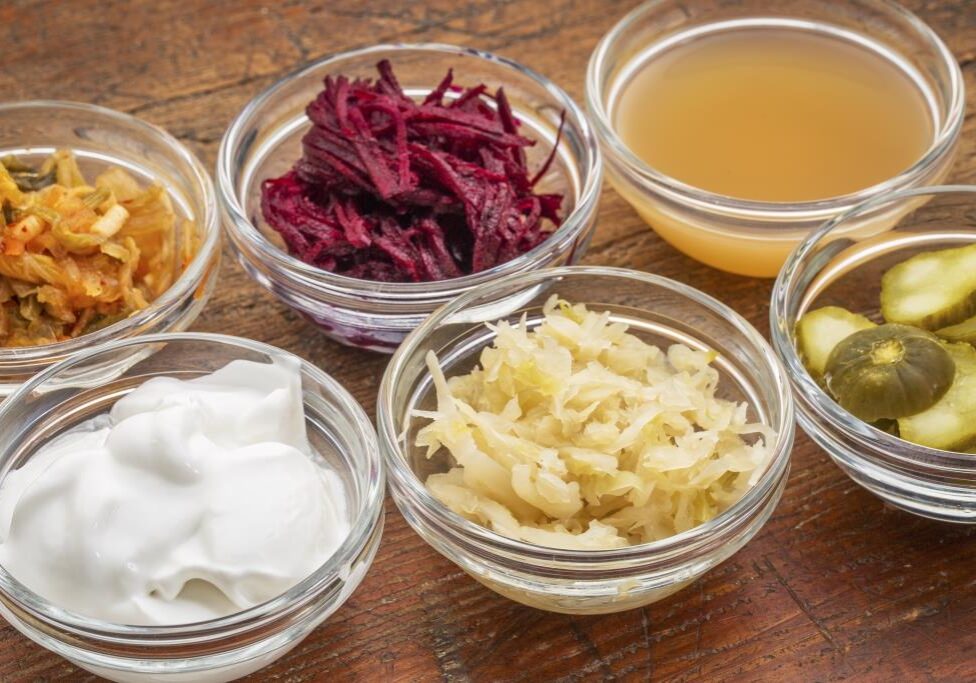What is the best way to get probiotics into your daily diet?
Are they more healthful as freeze-dried bacteria, such as you’ll find as pills and capsules on the shelves in supermarkets and pharmacies? Or when they’re taken as pills followed by prebiotics; that is, fiber-rich supplements intended to feed the probiotic bacteria when they wake up and become active in your gut?
Or when they are already actively fermenting fiber-rich foods, such as our wildbrine raw, fermented products like kimchi, sauerkraut, fermented salsas and sriracha?
The answer is that they are all beneficial, but when ingested as real food being actively fermented by living cultures, they are by far most biologically active form. We don’t claim this simply because these are the products we sell. We sell them this way because our research—and our tastebuds—and our healthy digestions–have proven to us that our products will be the healthiest and tastiest way to keep our microbiomes strong.
And a strong, healthy microbiome, comprised of trillions of microbes that have their natural home in human intestines, showers you with benefits. Let’s look at the research and see what it says about getting the benefits from food-borne microbes that colonize our intestines and regulate our health.
Let’s Chat Prebiotics
Preliminary research suggests that prebiotics may help strengthen the immune system, but the evidence is inconclusive. Dr. Reezwana Chowdhury of the Johns Hopkins School of Medicine said that she’s not aware of any data showing significant dangers associated with taking prebiotics, but also that there’s not enough evidence showing that they’re beneficial when treating conditions like irritable bowel syndrome or diarrhea, so she’s never recommended them.
Dr. Lisa Ganjhu of the N.Y.U. Grossman School of Medicine, who specializes in gastroenterology, agreed. She says the average person doesn’t need to take prebiotics. Some people may notice some benefits, she said, but some may even notice worsened symptoms.
According to Justin Sonnenburg, professor of microbiology and immunology at Stanford, when it comes to nourishing the good bacteria in your microbiome, eating plenty of fruits and vegetables will likely be better than taking a prebiotic. “It’s very difficult to imagine how putting one purified prebiotic into this community [of intestinal microbes] could foster the kind of biodiversity you need. Adding more fiber into your diet will give you many of the same benefits of prebiotics,” he said, since fiber stimulates the growth of beneficial bacteria in your intestine.
The American Heart Association recommends that most people get at least 25 to 30 grams of dietary fiber per day. And nutritional experts at the University of California at San Francisco (UCSF) recommend at least five servings of fruits and vegetables each day, including t least one serving of whole grains at each meal.

The Best Way to Get Probiotics
Heading back to freeze-dried probiotics, an August 2022 article in the scientific journal Foods, is entitled, “Current Trends in the Production of Probiotic Formulations.” It finds that “processing and storage result in the loss of viability and stability in probiotic formulations.” To counteract that, the use of “food matrices” is one suggested remedy. Other remedies include adding skim milk and ascorbic acid (vitamin C), along with trehalose to the freeze-dried bacteria. Trehalose is a disaccharide comprised of two molecules of glucose, a common sugar.
But the best way to get probiotics into your body is suggested by the most recent research. In the September 2020 issue of Medicina, a scientific journal, there’s an article entitled, “Probiotics: Versatile Bioactive Components in the Promotion of Human Health.” It states, “One of the most essential delivery systems of probiotics is within food, due to the great beneficial health effect of this system compared to pharmaceutical products.”
“Probiotic nutraceuticals have the disadvantage that they can lead to a reduction in functional efficiency due to the exclusion of the potential synergistic effect of food,” the article states.
It goes on to say that the use of probiotic starter cultures in food production exhibits a “high nutritional and sensory value.” In other words, good for you and tastes good, too! According to the article, probiotics contribute a desired odor and flavor of foods “through fermentation process that presents a tangy lactic acid taste and aromatic sensory components. What is also essential is the protective aspect…of the living, active probiotic cells found within the nutritional ingredients of food.”
Putting these studies together into plain English, scientists conclude that not only do fermented foods like our wildbrine products taste good, have a wonderful aroma, support our microbiomes, enhance our health, and prevent disease, they do it better than any other way you can take advantage of the health benefits of probiotics.
About the Author: Sonoma County resident Jeff Cox is the author of 24 books, including The Essential Book of Fermentation (Avery, 2013)
